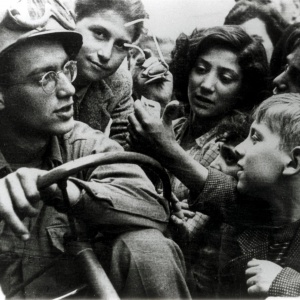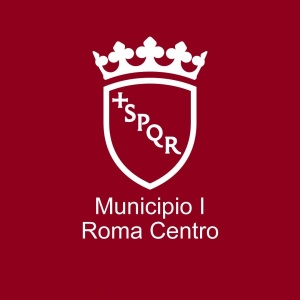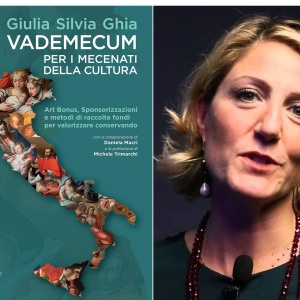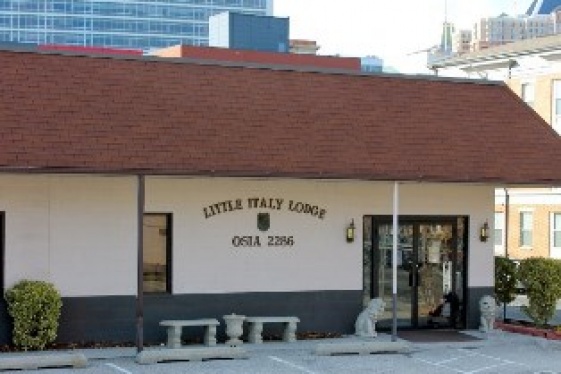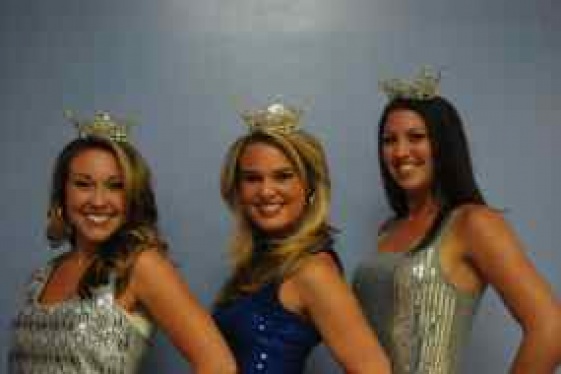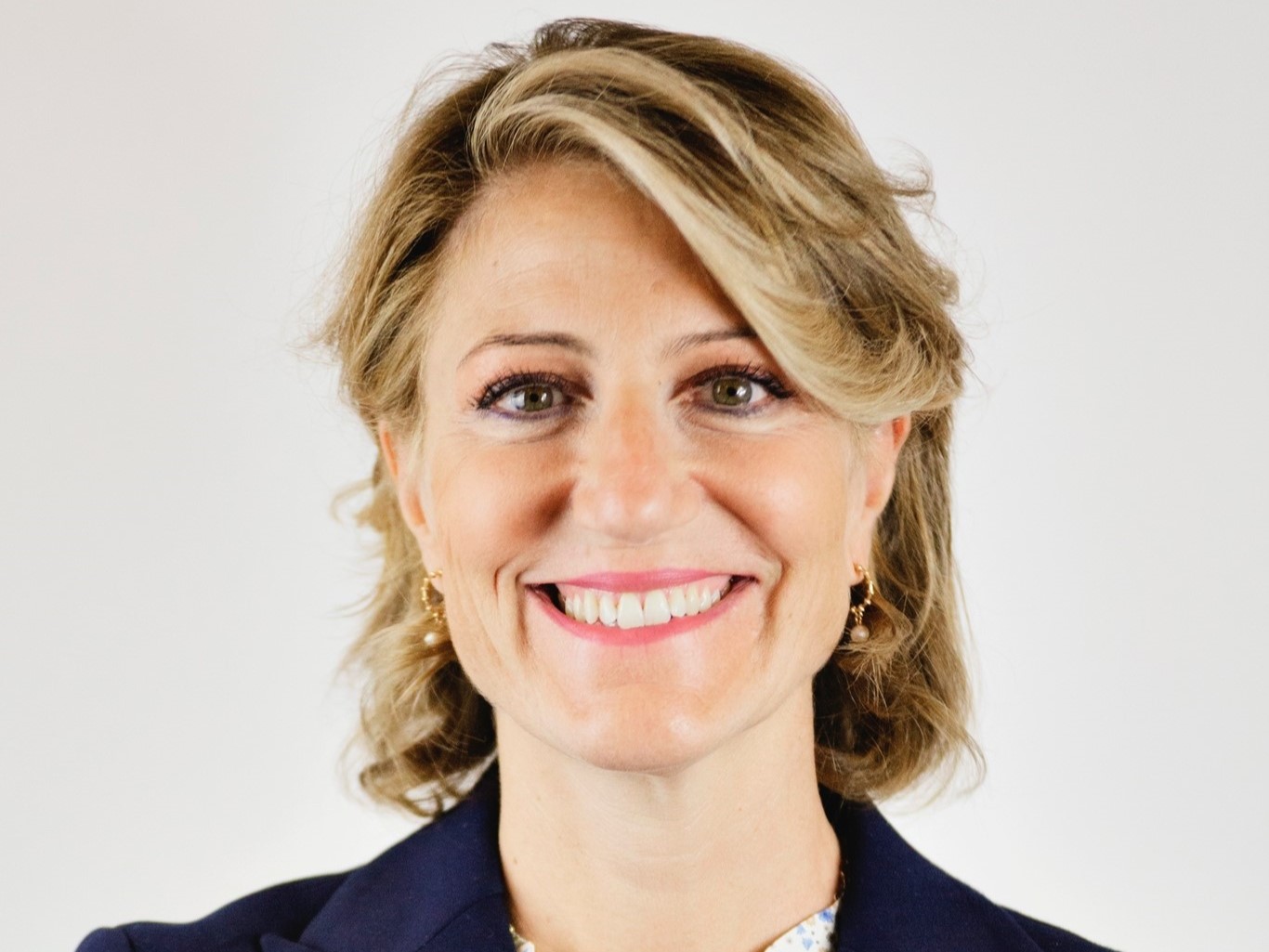
Giulia Silvia Ghia (Councilor for Culture of the 1st Municipality of Rome)
In rappresentanza di Roma, ricordiamo l'80° anniversario della liberazione da parte della Quinta Armata americana

One of the many advantages of leading We the Italians is that of knowing and collaborating with truly extraordinary people, who also here in Italy contribute to improving and maintaining the rapport of friendship between Italy and the United States. One of these wonderful people is Giulia Ghia.
I call her Minister, because being Councilor for Culture of the 1st Municipality of Rome is equivalent to being responsible for a cultural heritage that in Europe is probably inferior only to France and Spain, and perhaps not even to these two countries. I am very grateful to Giulia Ghia for everything she does, and in particular for representing the city of Rome today as we remember the eightieth anniversary of the liberation of Rome by the American Fifth Army.
Dear Giulia, the first question I ask you concerns you and your family, who seem to me to be at least as interested in relations between Italy and the United States as you are... it's nice to meet people who share, like me, this great love for the two best countries in the world (personal opinion...)
The connection with the United States is long-standing. An ancestor of my mother's family lived in San Francisco; he moved towards the end of the 19th century and the villa where he lived still exists. I also have a very vivid memory of a wonderful South American aunt, Aunt Elita, an artist in the true sense of the word who, when she came to visit us in Italy, enchanted me with her stories of this wonderful country. Then numerous trips made with my parents and sisters since we were little.
Until at a certain point my father was appointed to represent Italy in one of the Uncitral commissions at the United Nations. And so more than once a year we began to frequent and get to know the city of New York. Today I have a sister who has lived in San Diego for about 17 years and works as a researcher for the Cancer Institute of the University of San Diego and I don't think she will return to Italy soon; she even got married there! I myself married a social anthropologist who wrote a PhD thesis on Native Americans and is now a professor and also Assistant Dean for Student Academic Affairs at John Cabot University in Rome.
My association with this city has allowed me to develop part of my career in this country and I can confidently say that even today if you have a valid idea that you believe in, you will be able to realize it in this country. The know-how of being Italian is a priceless added value and in the USA, you understand it very well because you are outside of Italy.
Among your merits is also that of having helped We the Italians celebrate and thank the United States for the 80th anniversary of the liberation of Rome by the Fifth United States Army. We at We the Italians are pleased to have made our contribution... Representing the city of Rome, what do you feel like saying in this regard to the friends (Italian-Americans and otherwise) who read us?
We could not fail to celebrate this very important event, because without the Americans, there would no longer be an Italy. I am the daughter of a generation that was born during the Second World War and that still has vivid memories of what happened. My grandfather was a general in the Italian army and as long as he lived, he told me about that moment. America helped us, that same America where so many Italians had emigrated. We are two countries inextricably linked by history.
Of that June 4th 80 years ago, there are some wonderful images in the photographic archives of the Municipality of Rome, most of which are unpublished. Perhaps with this occasion it will be time to put together a beautiful publication that can help our young generations to remember the origins of the strong bond between these two countries.
Since November 2021 you have been Councilor of the 1st Municipality of Rome with responsibility for Culture, Education, Sport, and Youth Policies. What is the experience of holding such a prestigious and stimulating role?
It is an experience that certainly overwhelms you, which tends to engulf every aspect of your life. Being on the front line in a territory is very complicated and especially so in a city like Rome. Like all the historic centers of the largest European capitals, the city of Rome also suffers from the desertification by its residents, from the proliferation of B & Bs, from large events which often abuse the most fragile and delicate territory of the capital, unknowingly allowing and promoting its incorrect utilization.
But on the other hand, it is extremely stimulating because you have to defend the most beautiful area of Rome in the world from ignorance and neglect. You must try to implement policies that benefit residents of all ages, to ensure that culture can be that link between the contemporary and the ancient past, to give a new meaning to public places so that people can reclaim them with the right awareness and the right respect.
Let's discount the fact that Rome has been at a standstill in many respects for too many years. I often feel like I'm stopping the wind with my hands but then I just need to look outside to find the energy to fight for this wonderful city.
Your relationship with the United States materializes with many initiatives. One of these was your position as associate professor of “Italian art beyond the boundaries of the visible” at New Jersey City University…
I was an adjunct professor for 4 years. Now since I have had the institutional role, I have had to stop due to lack of time to dedicate to my updating and adequate preparation of the lessons, as well as the impossibility of staying in New York for part of the year.
During Covid I remember that I taught lessons from Italy and actually took the kids inside the places whose history I told them. With my iPad and portable wi-fi connection I took them into churches, squares, and museums, always having the director’s authorization to connect. Precisely during these lessons in this particular format, I understood how complicated it is for children to understand that the on-site specific concept was not born with contemporary artists but has centuries of history.
When I gave lessons from New York I took them to the Metropolitan trying to explain to them the difference between an Altarpiece and a painting from a private collection; they couldn't understand the specific context that generated that work. By doing lessons remotely and inside the sites, the children understood more easily the meaning of an altarpiece inserted inside a chapel in dialogue with the frescoes and therefore with the narrative theme of the entire decoration of those spaces.
It was a truly exciting experience.
You also created "Verderame project culture", a non-profit company based both in Italy and in the United States which carries out planning, fundraising and implementation of its own projects and those proposed by third parties linked to the cultural sector
Building bridges between the public and private sectors, or rather between the Italian cultural heritage and the world of profit, has always been a passion of mine. Probably my familiarity with the United States made me understand what prospects there could have been in Italy on this topic too.
After completing my second degree, I tried to specialize in a subject that today is called cultural economics, but at the beginning of the 2000s no one was talking about cultural heritage from an entrepreneurial perspective.
I remember that I ended up doing a first Master's degree in marketing with the hope that I could find some kind of connection to the world of culture. It was a kind of nightmare which, however, given my stubbornness, I completed and I must say that in the end this Master's degree was much more useful to me than the second one I took in Cultural Heritage Management which was finally offered in Rome at the Lumsa University.
At that point, thanks to my preparation, I founded the non-profit "Verderame cultural project" precisely with the aim of having private financing through the possible forms of the time, and I'm talking about 2012, projects aimed at knowledge, restoration and valorization of cultural heritage. No one had ever dealt with this aspect and it was really, above all, a truly arduous undertaking at the beginning.
The most difficult thing was finding people within the institutions who could understand the mission I had set for myself. But the time was ripe for this change. In 2014 the art bonus was proposed in Italy for the first time, which was then confirmed in 2016. And from here all the reforms occurred regarding sponsorship and therefore fundraising which take place through the crowdfunding mechanism.
As part of Verderame's activities, you collaborated with the National Italian American Foundation for a wonderful project: the restoration of Villa Farnesina... can you tell us more?
A few years after the birth of the Italian non-profit, I worked to found a "sister" in the United States. A few years later, International Friends of Verderame (IFV) was born. It is a 501c3, this is the code that non-profits have in the United States. In this way I put Americans in a position to donate according to their tax exemption system.
There were many relationships that I had developed over the years with some personalities in New York, starting from the Universities, the Italian Consulate and the Italian Cultural Institute, with which the collaboration has never stopped.
Thanks to We The Italians I was able to meet Robert Allegrini, President of the NIAF, and we immediately got on well. I requested his help in launching a fundraiser for a restoration to be carried out at Agostino Chigi's Villa, known as Villa Farnesina. The NIAF accepted the request and granted a grant to IFV with which we organized an event in Rome to raise funds which we allocated to the restoration of two works of art which are kept in the church near Villa Farnesina, a strategic church for the next Jubilee.
Finally, I would ask you about your books on art. The first is "Caravaggio in the Heritage of the Cult Buildings Fund: The Double and the Copy". The second is “Handbook for patrons of culture. Art Bonus, sponsorships and fundraising methods to enhance while preserving", which you also presented last year at the Italian Cultural Institute in New York...
During my first degree in art history, I became particularly passionate about the constituent materials of paintings, especially of the paintings created from the Renaissance to the 1600s. In that period, each artist began to detach himself from the rules and methods consolidated by the academies to develop absolutely personal creative processes.
I dedicated 7 years of my life to studying the execution technique of Michelangelo Merisi da Caravaggio, on the twenty-two canvases that are still kept in the city of Rome today. The publication of two volumes resulted, an incredible journey through the layers of this extraordinary artist's works of art.
Through diagnostic investigations carried out with the most modern technologies we were able to reconstruct the creative process of these twenty-two works starting from the canvas used for the preparation, the preparatory drawing, the choice of pigments and the way in which they were spread and applied by the artist. We thus discovered that Caravaggio drew with two techniques: if the preparation was light through the use of charcoal, if the preparation was dark, he created the drawing using a metal tip and therefore creating the contour lines of the figures by engraving them on the preparation. We discovered his regrets, changes of subject, reuse of unfinished canvases perhaps by other artists present in the workshop he frequented at the time; in short, many elements that are all told in this content-rich publication.
I wrote my other book during Covid. I needed to put my notes in order for the lessons of the Master's degree in Law and new technologies for the valorization of cultural heritage at the Faculty of Law of the La Sapienza University of Rome, where I teach "Museums, exhibitions and events: management of cultural heritage and the main mechanisms of fundraising."
This publication emerged, which is a milestone in what has almost been an obsession of mine since the beginning of my professional experience, namely that of helping all those people who, each according to their own possibilities, want to be part of the conservation, knowledge, of the valorization of our cultural heritage.
If in the first part I analyze, starting from jurisprudence, the mechanisms for being a patron of the arts in Italy, the second part is dedicated to projects that have seen the implementation of the laws and which have concretely led to results shared by the territories involved. It is a topic that I have discovered is of extreme interest, to my great surprise, even overseas.
You may be interested
-
'Phantom Limb': A Conversation With Dennis...
Dennis Palumbo is a thriller writer and psychotherapist in private practice. He's the auth...
-
2015 scholarship competition
The La Famiglia Scholarship committee is pleased to announce the financial aid competition...
-
A wreath for Columbus and three crowns for t...
The Columbus Day Committee of Atlantic City along with the Bonnie Blue Foundation annually...
-
An Unlikely Union: The love-hate story of Ne...
Award-winning author and Brooklynite Paul Moses is back with a historic yet dazzling sto...
-
Cathedral of St. John the Divine, Oratorio S...
For the first time ever, The Cathedral of St. John the Divine, in collaboration with the O...
-
Davide Gambino è il miglior "Young Italian F...
Si intitola Pietra Pesante, ed è il miglior giovane documentario italiano, a detta della N...
-
Emanuele: cervello d'Italia al Mit di Boston
Si chiama Emanuele Ceccarelli lo studente del liceo Galvani di Bologna unico italiano amme...







